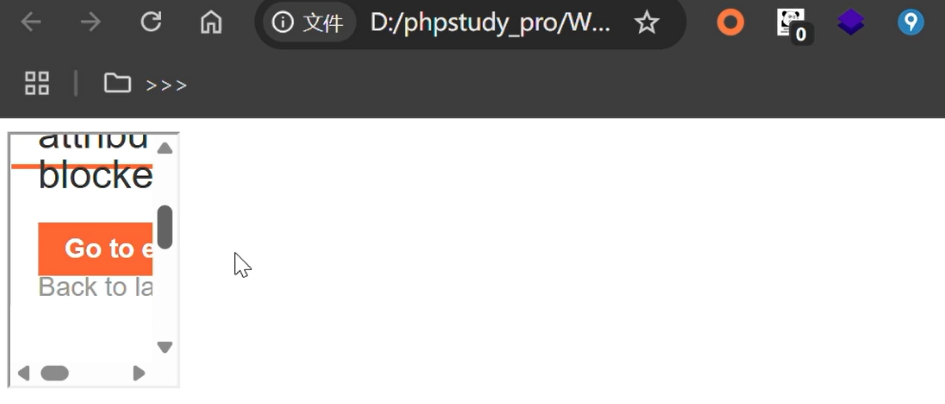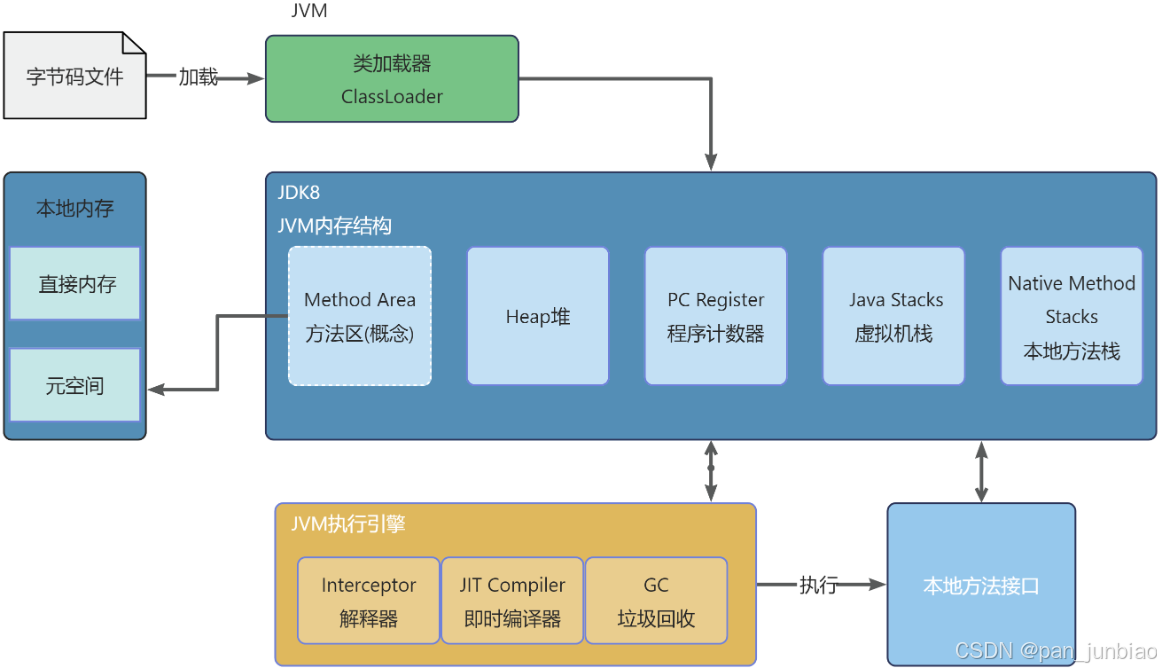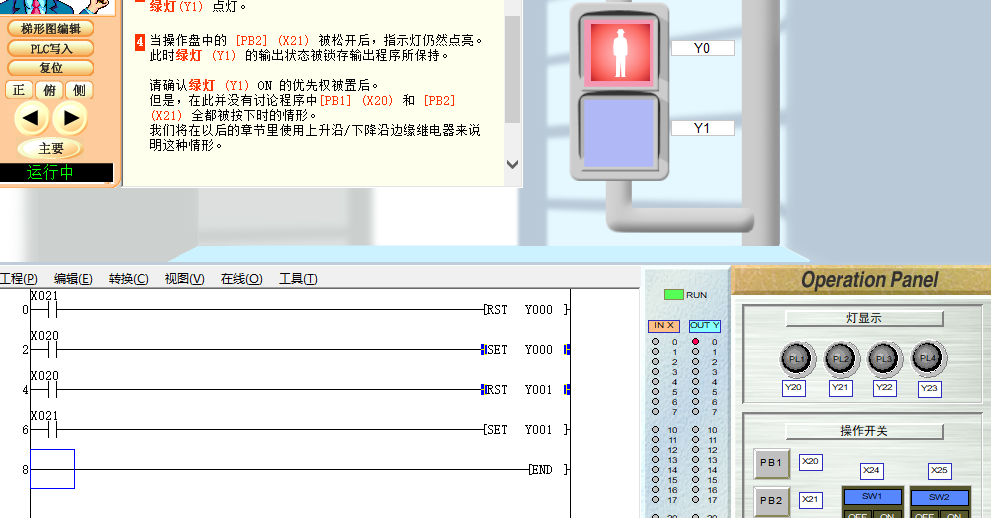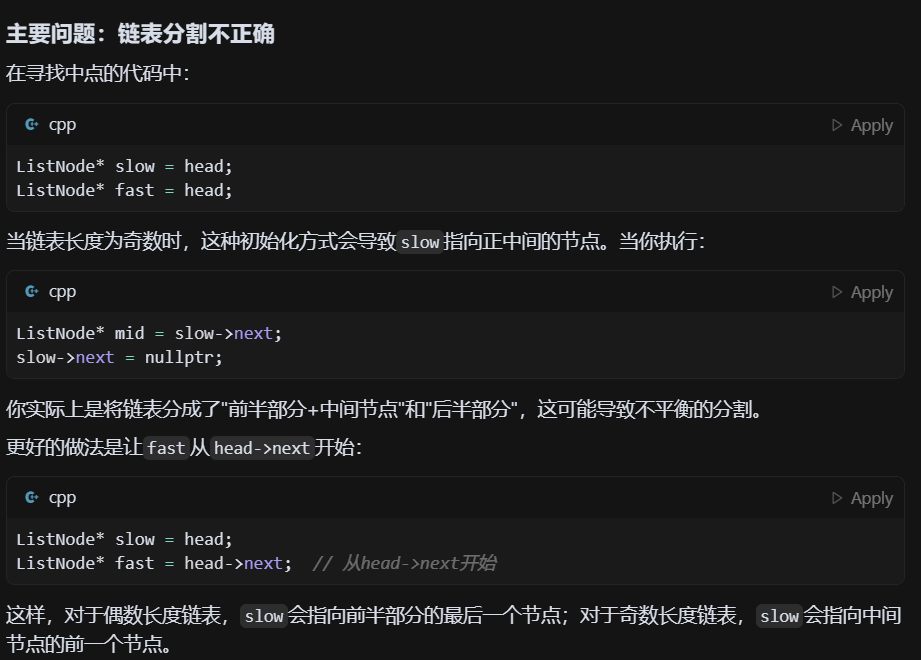Spring Boot - 数据库集成04 - 集成Redis
Spring boot集成Redis
文章目录
- Spring boot集成Redis
- 一:redis基本集成
- 1:RedisTemplate + Jedis
- 1.1:RedisTemplate
- 1.2:实现案例
- 1.2.1:依赖引入和属性配置
- 1.2.2:redisConfig配置
- 1.2.3:基础使用
- 2:RedisTemplate+Lettuce
- 2.1:什么是Lettuce
- 2.2:为何能干掉Jedis成为默认
- 2.3:Lettuce的基本的API方式
- 2.4:实现案例
- 2.5:数据类封装
- 二:集成redisson
- 1:单机可重入锁
- 2:红锁(Red Lock)
- 2.1:环境准备
- 2.2:配置编写
- 2.3:使用测试
- 3:读写锁
- 3.1:读锁lock.readLock()
- 3.2:写锁lock.writeLock()
- 4:Semaphore和countDownLatch
- 4.1:Semaphore
- 4.2:闭锁CountDownLatch
一:redis基本集成
首先对redis来说,所有的key(键)都是字符串。
我们在谈基础数据结构时,讨论的是存储值的数据类型,主要包括常见的5种数据类型,分别是:String、List、Set、Zset、Hash。

| 结构类型 | 结构存储的值 | 结构的读写能力 |
|---|---|---|
| String | 可以是字符串、整数或浮点数 | 对整个字符串或字符串的一部分进行操作;对整数或浮点数进行自增或自减操作; |
| List | 一个链表,链表上的每个节点都包含一个字符串 | 对链表的两端进行push和pop操作,读取单个或多个元素;根据值查找或删除元素; |
| Hash | 包含键值对的无序散列表 | 包含方法有添加、获取、删除单个元素 |
| Set | 包含字符串的无序集合 | 字符串的集合,包含基础的方法有看是否存在添加、获取、删除; 还包含计算交集、并集、差集等 |
| Zset | 和散列一样,用于存储键值对 | 字符串成员与浮点数分数之间的有序映射; 元素的排列顺序由分数的大小决定; 包含方法有添加、获取、删除单个元素以及根据分值范围或成员来获取元素 |
1:RedisTemplate + Jedis
Jedis是Redis的Java客户端,在SpringBoot 1.x版本中也是默认的客户端。
在SpringBoot 2.x版本中默认客户端是Luttuce。
1.1:RedisTemplate
Spring 通过模板方式(RedisTemplate)提供了对Redis的数据查询和操作功能。
什么是模板方法模式
模板方法模式(Template pattern): 在一个方法中定义一个算法的骨架, 而将一些步骤延迟到子类中.
模板方法使得子类可以在不改变算法结构的情况下, 重新定义算法中的某些步骤。

RedisTemplate对于Redis5种基础类型的操作
redisTemplate.opsForValue(); // 操作字符串
redisTemplate.opsForHash(); // 操作hash
redisTemplate.opsForList(); // 操作list
redisTemplate.opsForSet(); // 操作set
redisTemplate.opsForZSet(); // 操作zset
对HyperLogLogs(基数统计)类型的操作
redisTemplate.opsForHyperLogLog();
对geospatial (地理位置)类型的操作
redisTemplate.opsForGeo();
对于BitMap的操作,也是在opsForValue()方法返回类型ValueOperations中
Boolean setBit(K key, long offset, boolean value);
Boolean getBit(K key, long offset);
对于Stream的操作
redisTemplate.opsForStream();
1.2:实现案例
本例子主要基于SpringBoot2+ 使用Jedis客户端,通过RedisTemplate模板方式访问Redis数据。
其他实体类结构请看(集成Jpa)
1.2.1:依赖引入和属性配置
<dependency><groupId>org.springframework.boot</groupId><artifactId>spring-boot-starter-data-redis</artifactId><!-- 暂时先排除lettuce-core,使用jedis --><!-- jedis是spring-boot 1.x的默认,lettuce是spring-boot 2.x的默认 --><exclusions><exclusion><artifactId>lettuce-core</artifactId><groupId>io.lettuce</groupId></exclusion></exclusions>
</dependency><!-- 格外使用jedis -->
<dependency><groupId>redis.clients</groupId><artifactId>jedis</artifactId>
</dependency><!-- commons-pools,连接池 -->
<dependency><groupId>org.apache.commons</groupId><artifactId>commons-pool2</artifactId><version>2.9.0</version>
</dependency>
spring:# swagger配置mvc:path match:# 由于 springfox 3.0.x 版本 和 Spring Boot 2.6.x 版本有冲突,所以还需要先解决这个 bugmatching-strategy: ANT_PATH_MATCHER# 数据源配置datasource:url: jdbc:mysql://127.0.0.1:3306/mytest?useUnicode=true&characterEncoding=utf-8&useSSL=false&serverTimezone=Asia/Shanghaidriver-class-name: com.mysql.cj.jdbc.Driver # 8.0 +username: rootpassword: bnm314159# JPA 配置jpa:generate-ddl: false # 是否自动创建数据库表show-sql: true # 是否打印生成的 sqlproperties:hibernate:dialect: org.hibernate.dialect.MySQL8Dialect # 数据库方言 mysql8format_sql: true # 是否格式化 sqluse_new_id_generator_mappings: true # 是否使用新的 id 生成器# redis 配置redis:database: 0 # redis数据库索引(默认为0)host: 127.0.0.1 # redis服务器地址port: 6379 # redis服务器连接端口jedis:pool:min-idle: 0 # 连接池中的最小空闲连接max-active: 8 # 连接池最大连接数(使用负值表示没有限制)max-idle: 8 # 连接池中的最大空闲连接max-wait: -1ms # 连接池最大阻塞等待时间(使用负值表示没有限制)connect-timeout: 30000ms # 连接超时时间(毫秒)timeout: 30000ms # 读取超时时间(毫秒)
1.2.2:redisConfig配置
package com.cui.jpa_demo.config;import org.springframework.context.annotation.Bean;
import org.springframework.context.annotation.Configuration;
import org.springframework.data.redis.connection.RedisConnectionFactory;
import org.springframework.data.redis.core.RedisTemplate;
import org.springframework.data.redis.serializer.GenericJackson2JsonRedisSerializer;
import org.springframework.data.redis.serializer.StringRedisSerializer;/*** @author cui haida* 2025/1/25*/
@Configuration
public class RedisConfig {/*** 配置RedisTemplate以支持键值对存储* 该方法在Spring框架中定义了一个Bean,用于创建和配置RedisTemplate实例* RedisTemplate用于与Redis数据库进行交互,支持数据的存储和检索** @param factory RedisConnectionFactory实例,用于连接Redis服务器* @return 配置好的RedisTemplate实例,用于执行键值对操作*/@Beanpublic RedisTemplate<String, Object> redisTemplate(RedisConnectionFactory factory) {// 创建RedisTemplate实例,并指定键和值的类型RedisTemplate<String, Object> template = new RedisTemplate<>();// 设置连接工厂,用于建立与Redis服务器的连接template.setConnectionFactory(factory);// 配置键的序列化方式为StringRedisSerializer// 这是为了确保键以字符串形式存储和检索template.setKeySerializer(new StringRedisSerializer());// 配置哈希键的序列化方式为StringRedisSerializer// 这适用于哈希表中的键值对操作template.setHashKeySerializer(new StringRedisSerializer());// 配置值的序列化方式为GenericJackson2JsonRedisSerializer// 使用Jackson库将对象序列化为JSON格式存储template.setValueSerializer(new GenericJackson2JsonRedisSerializer());// 配置哈希表值的序列化方式为GenericJackson2JsonRedisSerializer// 同样使用Jackson库将对象序列化为JSON格式存储template.setHashValueSerializer(new GenericJackson2JsonRedisSerializer());// 初始化RedisTemplate,确保所有必需的属性都已设置template.afterPropertiesSet();// 返回配置好的RedisTemplate实例return template;}
}
1.2.3:基础使用
package com.cui.jpa_demo.controller;import com.cui.jpa_demo.entity.bean.UserQueryBean;
import com.cui.jpa_demo.entity.model.User;
import com.cui.jpa_demo.entity.response.ResponseResult;
import com.cui.jpa_demo.service.IUserService;
import org.springframework.data.domain.Page;
import org.springframework.data.domain.PageRequest;
import org.springframework.data.redis.core.RedisTemplate;
import org.springframework.web.bind.annotation.*;import javax.annotation.Resource;
import java.time.LocalDateTime;/*** @author cui haida* 2025/1/23*/
@RestController
@RequestMapping("/user")
public class UserController {private final IUserService userService;@Resourceprivate RedisTemplate<String, User> redisTemplate;public UserController(IUserService userService) {this.userService = userService;}@PostMapping("add")public ResponseResult<User> add(User user) {if (user.getId()==null || !userService.exists(user.getId())) {user.setCreateTime(LocalDateTime.now());user.setUpdateTime(LocalDateTime.now());userService.save(user);} else {user.setUpdateTime(LocalDateTime.now());userService.update(user);}return ResponseResult.success(userService.find(user.getId()));}/*** @return user list*/@GetMapping("edit/{userId}")public ResponseResult<User> edit(@PathVariable("userId") Long userId) {return ResponseResult.success(userService.find(userId));}/*** @return user list*/@GetMapping("list")public ResponseResult<Page<User>> list(@RequestParam int pageSize, @RequestParam int pageNumber) {return ResponseResult.success(userService.findPage(UserQueryBean.builder().build(), PageRequest.of(pageNumber, pageSize)));}@PostMapping("/redis/add")public ResponseResult<User> addIntoRedis(User user) {redisTemplate.opsForValue().set(String.valueOf(user.getId()), user);return ResponseResult.success(redisTemplate.opsForValue().get(String.valueOf(user.getId())));}@GetMapping("/redis/get/{userId}")public ResponseResult<User> getFromRedis(@PathVariable("userId") Long userId) {return ResponseResult.success(redisTemplate.opsForValue().get(String.valueOf(userId)));}
}
2:RedisTemplate+Lettuce
2.1:什么是Lettuce
Lettuce 是一个可伸缩线程安全的 Redis 客户端。多个线程可以共享同一个 RedisConnection。
它利用优秀 netty NIO 框架来高效地管理多个连接。
Lettuce的特性:
- 支持 同步、异步、响应式 的方式
- 支持 Redis Sentinel
- 支持 Redis Cluster
- 支持 SSL 和 Unix Domain Socket 连接
- 支持 Streaming API
- 支持 CDI 和 Spring 的集成
- 支持 Command Interfaces
- 兼容 Java 8+ 以上版本
2.2:为何能干掉Jedis成为默认
除了上述特性的支持性之外,最为重要的是Lettuce中使用了Netty框架,使其具备线程共享和异步的支持性。
线程共享
Jedis 是直连模式,在多个线程间共享一个 Jedis 实例时是线程不安全的
如果想要在多线程环境下使用 Jedis,需要使用连接池,每个线程都去拿自己的 Jedis 实例,当连接数量增多时,物理连接成本就较高了。
Lettuce 是基于 netty 的,连接实例可以在多个线程间共享,所以,一个多线程的应用可以使用一个连接实例,而不用担心并发线程的数量。
异步和反应式
Lettuce 从一开始就按照非阻塞式 IO 进行设计,是一个纯异步客户端,对异步和反应式 API 的支持都很全面。
即使是同步命令,底层的通信过程仍然是异步模型,只是通过阻塞调用线程来模拟出同步效果而已。

2.3:Lettuce的基本的API方式
依赖POM包
<dependency><groupId>io.lettuce</groupId><artifactId>lettuce-core</artifactId><version>x.y.z.BUILD-SNAPSHOT</version>
</dependency>
基础用法
// 声明redis-client
RedisClient client = RedisClient.create("redis://localhost");
// 创建连接
StatefulRedisConnection<String, String> connection = client.connect();
// 同步命令
RedisStringCommands sync = connection.sync();
// 执行get方法
String value = sync.get("key");
异步方式
StatefulRedisConnection<String, String> connection = client.connect();
// 异步命令
RedisStringAsyncCommands<String, String> async = connection.async();
// 异步set & get
RedisFuture<String> set = async.set("key", "value")
RedisFuture<String> get = async.get("key")async.awaitAll(set, get) == trueset.get() == "OK"
get.get() == "value"
- 响应式
StatefulRedisConnection<String, String> connection = client.connect();
RedisStringReactiveCommands<String, String> reactive = connection.reactive();
Mono<String> set = reactive.set("key", "value");
Mono<String> get = reactive.get("key");
// 订阅
set.subscribe();get.block() == "value"
2.4:实现案例
依赖和配置
<dependency><groupId>org.springframework.boot</groupId><artifactId>spring-boot-starter-data-redis</artifactId>
</dependency><!-- 一定要加入这个,否则连接池用不了 -->
<dependency><groupId>org.apache.commons</groupId><artifactId>commons-pool2</artifactId>
</dependency>
配置
# redis 配置redis:host: 127.0.0.1 # 地址port: 6379 # 端口database: 0 # redis 数据库索引# 如果是集群模式,需要配置如下
# cluster:
# nodes:
# - 127.0.0.1:7000
# - 127.0.0.1:7001
# - 127.0.0.1:7002lettuce:pool:max-wait: -1 # 最大连接等待时间, 默认 -1 表示没有限制max-active: 8 # 最大连接数, 默认8max-idle: 8 # 最大空闲连接数, 默认8min-idle: 0 # 最小空闲连接数, 默认0
# password: 123456 # 密码
# timeout: 10000ms # 超时时间
# ssl: false # 是否启用 SSL
# sentinel:
# master: mymaster # 主节点名称
# nodes: 127.0.0.1:26379,127.0.0.1:26380,127.0.0.1:26381 # 哨兵节点
序列化配置
redis的序列化也是我们在使用RedisTemplate的过程中需要注意的事情。
如果没有特殊设置redis的序列化方式,那么它其实使用的是默认的序列化方式【JdkSerializationRedisSerializer】。
这种序列化最大的问题就是存入对象后,我们很难直观看到存储的内容,很不方便我们排查问题
RedisTemplate这个类的泛型是<String,Object>, 也就是他是支持写入Object对象的,那么这个对象采取什么方式序列化存入内存中就是它的序列化方式。
Redis本身提供了以下几种序列化的方式:
- GenericToStringSerializer: 可以将任何对象泛化为字符串并序列化
- Jackson2JsonRedisSerializer: 跟JacksonJsonRedisSerializer实际上是一样的 <---- 我们要换成这个
- JacksonJsonRedisSerializer: 序列化object对象为json字符串
- JdkSerializationRedisSerializer: 序列化java对象【默认的】
- StringRedisSerializer: 简单的字符串序列化 JSON 方式序列化成字符串,存储到 Redis 中 。我们查看的时候比较直观
package com.study.study_demo_of_spring_boot.redis_study.config;import com.fasterxml.jackson.annotation.JsonAutoDetect;
import com.fasterxml.jackson.annotation.JsonTypeInfo;
import com.fasterxml.jackson.annotation.PropertyAccessor;
import com.fasterxml.jackson.databind.ObjectMapper;
import com.fasterxml.jackson.databind.jsontype.impl.LaissezFaireSubTypeValidator;
import org.springframework.context.annotation.Bean;
import org.springframework.context.annotation.Configuration;
import org.springframework.data.redis.connection.RedisConnectionFactory;
import org.springframework.data.redis.core.RedisTemplate;
import org.springframework.data.redis.serializer.Jackson2JsonRedisSerializer;
import org.springframework.data.redis.serializer.StringRedisSerializer;/*** <p>* 功能描述:redis 序列化配置类* </p>** @author cui haida* @date 2024/04/13/19:52*/
@Configuration
public class RedisConfig {/*** 创建并配置RedisTemplate,用于操作Redis数据库。** @param factory Redis连接工厂,用于创建Redis连接。* @return 配置好的RedisTemplate对象,可以用于执行Redis操作。*/@Bean(name = "redisTemplate")public RedisTemplate<String, Object> getRedisTemplate(RedisConnectionFactory factory) {RedisTemplate<String, Object> redisTemplate = new RedisTemplate<>();redisTemplate.setConnectionFactory(factory);// 配置Key的序列化方式为StringRedisSerializerStringRedisSerializer stringRedisSerializer = new StringRedisSerializer();redisTemplate.setKeySerializer(stringRedisSerializer);// 配置Value的序列化方式为Jackson2JsonRedisSerializerJackson2JsonRedisSerializer<Object> jackson2JsonRedisSerializer = new Jackson2JsonRedisSerializer<>(Object.class);ObjectMapper objectMapper = new ObjectMapper();objectMapper.setVisibility(PropertyAccessor.ALL, JsonAutoDetect.Visibility.ANY);objectMapper.activateDefaultTyping(LaissezFaireSubTypeValidator.instance, ObjectMapper.DefaultTyping.NON_FINAL, JsonTypeInfo.As.PROPERTY);jackson2JsonRedisSerializer.setObjectMapper(objectMapper);redisTemplate.setValueSerializer(jackson2JsonRedisSerializer);// 配置Hash的Key和Value的序列化方式redisTemplate.setHashKeySerializer(stringRedisSerializer);redisTemplate.setHashValueSerializer(jackson2JsonRedisSerializer);// 初始化RedisTemplateredisTemplate.afterPropertiesSet();return redisTemplate;}
}
业务类调用
import io.swagger.annotations.ApiOperation;
import org.springframework.data.redis.core.RedisTemplate;
import org.springframework.web.bind.annotation.*;
import tech.pdai.springboot.redis.lettuce.entity.User;
import tech.pdai.springboot.redis.lettuce.entity.response.ResponseResult;import javax.annotation.Resource;@RestController
@RequestMapping("/user")
public class UserController {// 注意:这里@Autowired是报错的,因为@Autowired按照类名注入的@Resourceprivate RedisTemplate<String, User> redisTemplate;/*** @param user user param* @return user*/@ApiOperation("Add")@PostMapping("add")public ResponseResult<User> add(User user) {redisTemplate.opsForValue().set(String.valueOf(user.getId()), user);return ResponseResult.success(redisTemplate.opsForValue().get(String.valueOf(user.getId())));}/*** @return user list*/@ApiOperation("Find")@GetMapping("find/{userId}")public ResponseResult<User> edit(@PathVariable("userId") String userId) {return ResponseResult.success(redisTemplate.opsForValue().get(userId));}
}
2.5:数据类封装
RedisTemplate中的操作和方法众多,为了程序保持方法使用的一致性,屏蔽一些无关的方法以及对使用的方法进一步封装。
import org.springframework.data.redis.core.RedisCallback;import java.util.Collection;
import java.util.Set;/*** 可能只关注这些方法*/
public interface IRedisService<T> {void set(String key, T value);void set(String key, T value, long time);T get(String key);void delete(String key);void delete(Collection<String> keys);boolean expire(String key, long time);Long getExpire(String key);boolean hasKey(String key);Long increment(String key, long delta);Long decrement(String key, long delta);void addSet(String key, T value);Set<T> getSet(String key);void deleteSet(String key, T value);T execute(RedisCallback<T> redisCallback);
}
RedisService的实现类
import org.springframework.data.redis.core.RedisCallback;
import org.springframework.data.redis.core.RedisTemplate;
import org.springframework.stereotype.Service;
import tech.pdai.springboot.redis.lettuce.enclosure.service.IRedisService;import javax.annotation.Resource;
import java.util.Collection;
import java.util.Set;
import java.util.concurrent.TimeUnit;@Service
public class RedisServiceImpl<T> implements IRedisService<T> {@Resourceprivate RedisTemplate<String, T> redisTemplate;@Overridepublic void set(String key, T value, long time) {redisTemplate.opsForValue().set(key, value, time, TimeUnit.SECONDS);}@Overridepublic void set(String key, T value) {redisTemplate.opsForValue().set(key, value);}@Overridepublic T get(String key) {return redisTemplate.opsForValue().get(key);}@Overridepublic void delete(String key) {redisTemplate.delete(key);}@Overridepublic void delete(Collection<String> keys) {redisTemplate.delete(keys);}@Overridepublic boolean expire(String key, long time) {return redisTemplate.expire(key, time, TimeUnit.SECONDS);}@Overridepublic Long getExpire(String key) {return redisTemplate.getExpire(key, TimeUnit.SECONDS);}@Overridepublic boolean hasKey(String key) {return redisTemplate.hasKey(key);}@Overridepublic Long increment(String key, long delta) {return redisTemplate.opsForValue().increment(key, delta);}@Overridepublic Long decrement(String key, long delta) {return redisTemplate.opsForValue().increment(key, -delta);}@Overridepublic void addSet(String key, T value) {redisTemplate.opsForSet().add(key, value);}@Overridepublic Set<T> getSet(String key) {return redisTemplate.opsForSet().members(key);}@Overridepublic void deleteSet(String key, T value) {redisTemplate.opsForSet().remove(key, value);}@Overridepublic T execute(RedisCallback<T> redisCallback) {return redisTemplate.execute(redisCallback);}
}
RedisService的调用
@RestController
@RequestMapping("/user")
public class UserController {@Autowiredprivate IRedisService<User> redisService;//...
}
二:集成redisson
1:单机可重入锁
redisson-spring-boot-starter依赖于与最新版本的spring-boot兼容的redisson-spring数据模块。
| redisson-spring-data module name | spring boot version |
|---|---|
| redisson-spring-data-16 | 1.3.y |
| redisson-spring-data-17 | 1.4.y |
| redisson-spring-data-18 | 1.5.y |
| redisson-spring-data-2x | 2.x.y |
| redisson-spring-data-3x | 3.x.y |
<!-- redisson -->
<dependency><groupId>org.redisson</groupId><artifactId>redisson-spring-boot-starter</artifactId><version>3.16.2</version>
</dependency>
package com.study.study_demo_of_spring_boot.redis_study.config;import lombok.Data;
import org.redisson.Redisson;
import org.redisson.api.RedissonClient;
import org.redisson.config.Config;
import org.springframework.boot.context.properties.ConfigurationProperties;
import org.springframework.context.annotation.Bean;
import org.springframework.context.annotation.Configuration;import java.io.IOException;/*** <p>* 功能描述:redis client 配置* </p>** @author cui haida* @date 2024/04/14/7:24*/
@Configuration
@ConfigurationProperties(prefix = "spring.redis")
@Data
public class MyRedissonConfig {private String host;private int port;@Bean(destroyMethod = "shutdown")RedissonClient redisson() throws IOException {Config config = new Config();config.useSingleServer().setAddress("redis://" + host + ":" + port);return Redisson.create(config);}
}
加锁解锁测试
package com.study.study_demo_of_spring_boot.redis_study.use;import com.study.study_demo_of_spring_boot.redis_study.config.MyRedissonConfig;
import com.study.study_demo_of_spring_boot.redis_study.util.RedisUtil;
import org.junit.Test;
import org.junit.runner.RunWith;
import org.redisson.api.RLock;
import org.redisson.api.RedissonClient;
import org.springframework.beans.factory.annotation.Autowired;
import org.springframework.boot.test.context.SpringBootTest;
import org.springframework.test.context.junit4.SpringRunner;import java.util.concurrent.TimeUnit;/*** <p>* 功能描述:redis test* </p>** @author cui haida* @date 2024/04/14/7:28*/
@RunWith(SpringRunner.class)
@SpringBootTest
public class UseTest {@Autowiredprivate RedisUtil redisUtil;@Autowiredprivate RedissonClient redissonClient;@Testpublic void redisNormalTest() {redisUtil.set("name", "张三");}@Testpublic void redissonTest() {RLock lock = redissonClient.getLock("global_lock_key");try {System.out.println(lock);// 加锁30mslock.lock(30, TimeUnit.MILLISECONDS);if (lock.isLocked()) {System.out.println("获取到了");} else {System.out.println("未获取到");}} catch (Exception e) {e.printStackTrace();} finally {if (lock.isHeldByCurrentThread()) {lock.unlock();System.out.println("解锁成功");}}}
}
lock.lock()即没有指定锁的过期时间,就是用30s,即看门狗的默认时间,只要占锁成功,就会启动一个定时任务,每隔10秒就会自动续期到30秒。lock.lock(10, TimeUnit.xxx),默认锁的过期时间就是我们指定的时间。
2:红锁(Red Lock)
红锁其实就是对多个redission节点同时加锁
2.1:环境准备
用docker启动三个redis实例,模拟redLock
docker run -itd # -d 后台启动, -it shell交互--name redlock-1 # 这个容器的名称-p 6380:6379 # 端口映射 redis的6379 <-> 容器的6380映射redis:7.0.8 # 镜像名称,如果没有下载对应的redis镜像,将会先进行拉取--requirepass 123456 # redis密码123456
docker run -itd --name redlock-2 -p 6381:6379 redis:7.0.8 --requirepass 123456
docker run -itd --name redlock-3 -p 6382:6379 redis:7.0.8 --requirepass 123456

2.2:配置编写
package com.study.study_demo_of_spring_boot.redis_study.config;import lombok.Data;
import org.redisson.Redisson;
import org.redisson.api.RedissonClient;
import org.redisson.config.Config;
import org.springframework.boot.context.properties.ConfigurationProperties;
import org.springframework.context.annotation.Bean;
import org.springframework.context.annotation.Configuration;import java.io.IOException;/*** <p>* 功能描述:redis client 配置* </p>** @author cui haida* @date 2024/04/14/7:24*/
@Configuration
@ConfigurationProperties(prefix = "spring.redis")
@Data
public class MyRedissonConfig {private String host;private int port;@Bean(name = "normalRedisson", destroyMethod = "shutdown")RedissonClient redisson() {Config config = new Config();config.useSingleServer().setAddress("redis://" + host + ":" + port);return Redisson.create(config);}@Bean(name = "redLock1")RedissonClient redissonClient1(){Config config = new Config();config.useSingleServer().setAddress("redis://ip:6380").setDatabase(0).setPassword("123456");return Redisson.create(config);}@Bean(name = "redLock2")RedissonClient redissonClient2(){Config config = new Config();config.useSingleServer().setAddress("redis://ip:6381").setDatabase(0).setPassword("123456");return Redisson.create(config);}@Bean(name = "redLock3")RedissonClient redissonClient3(){Config config = new Config();config.useSingleServer().setAddress("redis://ip:6382").setDatabase(0).setPassword("123456");return Redisson.create(config);}
}
2.3:使用测试
package com.study.study_demo_of_spring_boot.redis_study.use;import com.study.study_demo_of_spring_boot.redis_study.config.MyRedissonConfig;
import com.study.study_demo_of_spring_boot.redis_study.util.RedisUtil;
import org.junit.Test;
import org.junit.runner.RunWith;
import org.redisson.RedissonRedLock;
import org.redisson.api.RLock;
import org.redisson.api.RedissonClient;
import org.springframework.beans.factory.annotation.Autowired;
import org.springframework.beans.factory.annotation.Qualifier;
import org.springframework.boot.test.context.SpringBootTest;
import org.springframework.test.context.junit4.SpringRunner;import java.util.concurrent.TimeUnit;/*** <p>* 功能描述:* </p>** @author cui haida* @date 2024/04/14/7:28*/
@RunWith(SpringRunner.class)
@SpringBootTest
public class UseTest {@Autowired@Qualifier("redLock1")private RedissonClient redLock1;@Autowired@Qualifier("redLock2")private RedissonClient redLock2;@Autowired@Qualifier("redLock3")private RedissonClient redLock3;@Testpublic void redLockTest() {RLock lock1 = redLock1.getLock("global_lock_key");RLock lock2 = redLock2.getLock("global_lock_key");RLock lock3 = redLock3.getLock("global_lock_key");// 三个构成red lockRedissonRedLock redLock = new RedissonRedLock(lock1, lock2, lock3);//定义获取锁标志位,默认是获取失败boolean isLockBoolean = false;try {// 等待获取锁的最长时间。如果在等待时间内无法获取锁,并且没有其他锁释放,则返回 false。如果 waitTime < 0,则无限期等待,直到获得锁定。int waitTime = 1;// 就是redis key的过期时间,锁的持有时间,可以使用 ttl 查看过期时间。int leaseTime = 20;// 如果在持有时间结束前锁未被释放,则锁将自动过期,没有进行key续期,并且其他线程可以获得此锁。如果 leaseTime = 0,则锁将永久存在,直到被显式释放。isLockBoolean = redLock.tryLock(waitTime, leaseTime, TimeUnit.SECONDS);System.out.printf("线程:"+Thread.currentThread().getId()+",是否拿到锁:" +isLockBoolean +"\n");if (isLockBoolean) {System.out.println("线程:"+Thread.currentThread().getId() + ",加锁成功,进入业务操作");try {//业务逻辑,40s模拟,超过了key的过期时间TimeUnit.SECONDS.sleep(40);} catch (InterruptedException e) {e.printStackTrace();}}} catch (Exception e) {System.err.printf("线程:"+Thread.currentThread().getId()+"发生异常,加锁失败");e.printStackTrace();} finally {// 无论如何,最后都要解锁redLock.unlock();}System.out.println(isLockBoolean);}
}
3:读写锁
基于Redis的Redisson分布式可重入读写锁RReadWriteLock
Java对象实现了java.util.concurrent.locks.ReadWriteLock接口。其中读锁和写锁都继承了RLock接口。
分布式可重入读写锁允许同时有多个读锁和一个写锁处于加锁状态。
3.1:读锁lock.readLock()
@GetMapping("/read")
public String readValue() {// 声明一个可重入读写锁RReadWriteLock lock = redissonClient.getReadWriteLock("rw-lock");String s = "";//加读锁RLock rLock = lock.readLock();rLock.lock();try {System.out.println("读锁加锁成功"+Thread.currentThread().getId()); // 拿到values = redisTemplate.opsForValue().get("writeValue");Thread.sleep(30000);} catch (Exception e) {e.printStackTrace();} finally {// 解锁rLock.unlock();System.out.println("读锁释放"+Thread.currentThread().getId());}return s;
}
3.2:写锁lock.writeLock()
@GetMapping("/write")
public String writeValue(){// 获取一把锁RReadWriteLock lock = redissonClient.getReadWriteLock("rw-lock");String s = "";// 加写锁RLock rLock = lock.writeLock();try {//1、改数据加写锁,读数据加读锁rLock.lock();System.out.println("写锁加锁成功..."+Thread.currentThread().getId());s = UUID.randomUUID().toString();Thread.sleep(30000);// 写入redis中redisTemplate.opsForValue().set("writeValue",s);} catch (Exception e) {e.printStackTrace();} finally {rLock.unlock();System.out.println("写锁释放"+Thread.currentThread().getId());}return s;
}
- 先加写锁,后加读锁,此时并不会立刻给数据加读锁,而是需要等待写锁释放后,才能加读锁
- 先加读锁,再加写锁:有读锁,写锁需要等待
- 先加读锁,再加读锁:并发读锁相当于无锁模式,会同时加锁成功
只要有写锁的存在,都必须等待,写锁是一个排他锁,只能有一个写锁存在,读锁是一个共享锁,可以有多个读锁同时存在
源码在这里:https://blog.csdn.net/meser88/article/details/116591953
4:Semaphore和countDownLatch
4.1:Semaphore
基本使用
基于Redis的Redisson的分布式信号量(Semaphore)
Java对象RSemaphore采用了与java.util.concurrent.Semaphore相似的接口和用法
Semaphore是信号量,可以设置许可的个数,表示同时允许多个线程使用这个信号量(acquire()获取许可)
- 如果没有许可可用就线程阻塞,并且通过AQS进行排队
- 可以使用
release()释放许可,当某一个线程释放了某一个许可之后,将会从AQS中依次唤醒,直到没有空闲许可。
@Test
public void semaphoreTest() throws InterruptedException {RSemaphore semaphore = redissonClient.getSemaphore("semaphore");// 同时最多允许3个线程获取锁semaphore.trySetPermits(3);for(int i = 0; i < 10; i++) {new Thread(() -> {try {System.out.println(new Date() + ":线程[" + Thread.currentThread().getName() + "]尝试获取Semaphore锁");semaphore.acquire();System.out.println(new Date() + ":线程[" + Thread.currentThread().getName() + "]成功获取到了Semaphore锁,开始工作");Thread.sleep(3000);semaphore.release();System.out.println(new Date() + ":线程[" + Thread.currentThread().getName() + "]释放Semaphore锁");} catch (Exception e) {e.printStackTrace();}}).start();}Thread.sleep(5000);
}
源码分析 - trySetPermits
@Override
public boolean trySetPermits(int permits) {return get(trySetPermitsAsync(permits));
}@Override
public RFuture<Boolean> trySetPermitsAsync(int permits) {RFuture<Boolean> future = commandExecutor.evalWriteAsync(getRawName(), LongCodec.INSTANCE, RedisCommands.EVAL_BOOLEAN,"local value = redis.call('get', KEYS[1]); " +"if (value == false or value == 0) then "+ "redis.call('set', KEYS[1], ARGV[1]); "+ "redis.call('publish', KEYS[2], ARGV[1]); "+ "return 1;"+ "end;"+ "return 0;",Arrays.asList(getRawName(), getChannelName()), permits);// other....完成的时候打日志
}
- get semaphore,获取到一个当前的值
- 第一次数据为0, 然后使用set semaphore 3,将这个信号量同时能够允许获取锁的客户端的数量设置为3
- 然后发布一些消息,返回1
源码分析 -> acquire
@Override
public void acquire(int permits) throws InterruptedException {// try - acquire ?if (tryAcquire(permits)) {return;}RFuture<RedissonLockEntry> future = subscribe();commandExecutor.syncSubscriptionInterrupted(future);try {while (true) {if (tryAcquire(permits)) {return;}future.getNow().getLatch().acquire();}} finally {unsubscribe(future);}// get(acquireAsync(permits));
}@Override
public boolean tryAcquire(int permits) {return get(tryAcquireAsync(permits));
}@Override
public RFuture<Boolean> tryAcquireAsync(int permits) {if (permits < 0) {throw new IllegalArgumentException("Permits amount can't be negative");}if (permits == 0) {return RedissonPromise.newSucceededFuture(true);}return commandExecutor.evalWriteAsync(getRawName(), LongCodec.INSTANCE, RedisCommands.EVAL_BOOLEAN,"local value = redis.call('get', KEYS[1]); " +"if (value ~= false and tonumber(value) >= tonumber(ARGV[1])) then " +"local val = redis.call('decrby', KEYS[1], ARGV[1]); " +"return 1; " +"end; " +"return 0;",Collections.<Object>singletonList(getRawName()), permits);
}
- get semaphore,获取到一个当前的值,比如说是3,3 > 1
- decrby semaphore 1,将信号量允许获取锁的客户端的数量递减1,变成2
- decrby semaphore 1
- decrby semaphore 1
- 执行3次加锁后,semaphore值为0
此时如果再来进行加锁则直接返回0,然后进入死循环去获取锁
源码分析 -> release
@Override
public RFuture<Void> releaseAsync(int permits) {if (permits < 0) {throw new IllegalArgumentException("Permits amount can't be negative");}if (permits == 0) {return RedissonPromise.newSucceededFuture(null);}RFuture<Void> future = commandExecutor.evalWriteAsync(getRawName(), StringCodec.INSTANCE, RedisCommands.EVAL_VOID,"local value = redis.call('incrby', KEYS[1], ARGV[1]); " +"redis.call('publish', KEYS[2], value); ",Arrays.asList(getRawName(), getChannelName()), permits);if (log.isDebugEnabled()) {future.onComplete((o, e) -> {if (e == null) {log.debug("released, permits: {}, name: {}", permits, getName());}});}return future;
}
- incrby semaphore 1,每次一个客户端释放掉这个锁的话,就会将信号量的值累加1,信号量的值就不是0了
4.2:闭锁CountDownLatch
基于Redisson的Redisson分布式闭锁(CountDownLatch)
Java对象RCountDownLatch采用了与java.util.concurrent.CountDownLatch相似的接口和用法。
countDownLatch是计数器,可以设置一个数字,一个线程如果调用countDownLatch的await()将会发生阻塞
其他的线程可以调用countDown()对数字进行减一,数字成为0之后,阻塞的线程就会被唤醒。
底层原理就是,调用了await()的方法会利用AQS进行排队。一旦数字成为0。AQS中的内容将会被依次唤醒。
@Test
public void countDownLatchTest() throws InterruptedException {RCountDownLatch latch = redissonClient.getCountDownLatch("anyCountDownLatch");latch.trySetCount(3);System.out.println(new Date() + ":线程[" + Thread.currentThread().getName() + "]设置了必须有3个线程执行countDown,进入等待中。。。");for(int i = 0; i < 3; i++) {new Thread(() -> {try {System.out.println(new Date() + ":线程[" + Thread.currentThread().getName() + "]在做一些操作,请耐心等待。。。。。。");Thread.sleep(3000);RCountDownLatch localLatch = redissonClient.getCountDownLatch("anyCountDownLatch");localLatch.countDown();System.out.println(new Date() + ":线程[" + Thread.currentThread().getName() + "]执行countDown操作");} catch (Exception e) {e.printStackTrace();}}).start();}// 一等多模型,主线程阻塞等子线程执行完毕,将countdown -> 0,主线程才能往下走latch.await();System.out.println(new Date() + ":线程[" + Thread.currentThread().getName() + "]收到通知,有3个线程都执行了countDown操作,可以继续往下走");
}
先分析
trySetCount()方法逻辑:
@Override
public RFuture<Boolean> trySetCountAsync(long count) {return commandExecutor.evalWriteAsync(getName(), LongCodec.INSTANCE, RedisCommands.EVAL_BOOLEAN,"if redis.call('exists', KEYS[1]) == 0 then "+ "redis.call('set', KEYS[1], ARGV[2]); "+ "redis.call('publish', KEYS[2], ARGV[1]); "+ "return 1 "+ "else "+ "return 0 "+ "end",Arrays.<Object>asList(getName(), getChannelName()), newCountMessage, count);
}
exists anyCountDownLatch,第一次肯定是不存在的set redisson_countdownlatch__channel__anyCountDownLatch 3- 返回1
接着分析
latch.await()方法
@Override
public void await() throws InterruptedException {if (getCount() == 0) {return;}RFuture<RedissonCountDownLatchEntry> future = subscribe();try {commandExecutor.syncSubscriptionInterrupted(future);while (getCount() > 0) {// waiting for open statefuture.getNow().getLatch().await();}} finally {unsubscribe(future);}
}
这个方法其实就是陷入一个while true死循环,不断的get anyCountDownLatch的值
如果这个值还是大于0那么就继续死循环,否则的话呢,就退出这个死循环
最后分析
localLatch.countDown()方法
@Override
public RFuture<Void> countDownAsync() {return commandExecutor.evalWriteAsync(getName(), LongCodec.INSTANCE, RedisCommands.EVAL_BOOLEAN,"local v = redis.call('decr', KEYS[1]);" +"if v <= 0 then redis.call('del', KEYS[1]) end;" +"if v == 0 then redis.call('publish', KEYS[2], ARGV[1]) end;",Arrays.<Object>asList(getName(), getChannelName()), zeroCountMessage);
}
decr anyCountDownLatch,就是每次一个客户端执行countDown操作,其实就是将这个cocuntDownLatch的值递减1
相关文章:

Spring Boot - 数据库集成04 - 集成Redis
Spring boot集成Redis 文章目录 Spring boot集成Redis一:redis基本集成1:RedisTemplate Jedis1.1:RedisTemplate1.2:实现案例1.2.1:依赖引入和属性配置1.2.2:redisConfig配置1.2.3:基础使用 2&…...

C++红黑树详解
文章目录 红黑树概念规则为什么最长路径不超过最短路径的二倍?红黑树的时间复杂度红黑树的结构插入叔叔节点情况的讨论只变色(叔叔存在且为红)抽象的情况变色单旋(叔叔不存在或叔叔存在且为黑)变色双旋(叔叔不存在或叔叔存在且为黑…...

与机器学习相关的概率论重要概念的介绍和说明
概率论一些重要概念的介绍和说明 1、 试验 (1)试验是指在特定条件下,对某种方法、技术、设备或产品(即,事物)进行测试或验证的过程。 (2)易混淆的概念是,实验。实验&…...

60.await与sleep的原理分析 C#例子 WPF例子
在异步任务中使用Thread.Sleep会阻塞当前线程,因其是同步操作,暂停线程执行而不释放资源。这与异步编程旨在避免线程阻塞的目的相冲突。尽管异步方法可能包含其他await调用,Thread.Sleep仍会立即阻塞线程,妨碍其处理其他任务或响应…...

数据库连接池是如何工作的?
连接池是一种用于管理和复用连接(如数据库连接或网络连接)的技术,广泛应用于数据库操作和网络请求中,以提高应用程序的性能和资源利用率。以下是连接池的工作原理和机制的详细解释: 连接池的工作原理 1. 初始化阶段 在应用程序启动时,连接池会根据配置参数预先创建一定…...

2025年01月26日Github流行趋势
项目名称:onlook 项目地址url:https://github.com/onlook-dev/onlook项目语言:TypeScript历史star数:4871今日star数:207项目维护者:Kitenite, drfarrell, iNerdStack, abhiroopc84, apps/dependabot项目简…...

C语言的灵魂——指针(1)
指针是C语言的灵魂,有了指针C语言才能完成一些复杂的程序;没了指针就相当于C语言最精髓的部分被去掉了,可见指针是多么重要。废话不多讲我们直接开始。 指针 一,内存和地址二,编址三,指针变量和地址1&#…...

vue2和vue3指令
Vue 2 和 Vue 3 的指令系统非常相似,但 Vue 3 在指令方面进行了优化和扩展。以下是 Vue 2 和 Vue 3 中指令的对比: 1. 通用指令 这些指令在 Vue 2 和 Vue 3 中都可以使用,功能一致: 指令说明v-bind绑定 HTML 属性或组件 propsv-…...

【超详细】ELK实现日志采集(日志文件、springboot服务项目)进行实时日志采集上报
本文章介绍,Logstash进行自动采集服务器日志文件,并手把手教你如何在springboot项目中配置logstash进行日志自动上报与日志自定义格式输出给logstash。kibana如何进行配置索引模式,可以在kibana中看到采集到的日志 日志流程 logfile-> l…...

微信阅读网站小程序的设计与实现(LW+源码+讲解)
专注于大学生项目实战开发,讲解,毕业答疑辅导,欢迎高校老师/同行前辈交流合作✌。 技术范围:SpringBoot、Vue、SSM、HLMT、小程序、Jsp、PHP、Nodejs、Python、爬虫、数据可视化、安卓app、大数据、物联网、机器学习等设计与开发。 主要内容:…...

通过配置核查,CentOS操作系统当前无多余的、过期的账户;但CentOS操作系统存在共享账户r***t
通过配置核查,CentOS操作系统当前无多余的、过期的账户;但CentOS操作系统存在共享 核查CentOS操作系统中的用户账户,可以使用以下命令: 查看当前活跃用户: awk -F: /\$1\$/{print $1} /etc/shadow 查看多余账户(非活跃账户&…...

Vue 3 30天精进之旅:Day 05 - 事件处理
引言 在前几天的学习中,我们探讨了Vue实例、计算属性和侦听器。这些概念为我们搭建了Vue应用的基础。今天,我们将专注于事件处理,这是交互式Web应用的核心部分。通过学习如何在Vue中处理事件,你将能够更好地与用户进行交互&#…...

.NET Core跨域
CORS 跨域通讯的问题。解决方案:JSONP、前端代理后端请求、CORS等。CORS原理:在服务器的响应报文头中通过access-control-allow-origin告诉浏览器允许跨域访问的域名。在Program.cs的“var appbuilder.Build()”这句代码之前注册 string[] urls new[] …...

笔试-二维数组2
应用 现有M(1<M<10)个端口组,每个端口组是长度为N(1<N<100),元素均为整数。如果这些端口组间存在2个及以上的元素相同,则认为端口组可以关联合并;若可以关联合并,请用二位数组表示输出结果。其中…...

vue中使用jquery 实现table 拖动改变尺寸
使用 CDN , 降低打包文件的大小在index.html中 <script src"https://.../cdns/jquery-1.12.4.min.js"></script>在 Vue 中使用 jQuery 一旦你引入 jQuery,你可以在 Vue 实例中使用它。有两种主要方式: 1. 使用全局变量 $ jQue…...

使用ensp进行ppp协议综合实验
实验拓扑 实验划分 AR1的Serial3/0/0接口:192.168.1.1/24; AR2的Serial3/0/0接口:192.168.1.2/24; AR2的Serial3/0/1和4/0/0的聚合接口:192.168.2.2/24; AR3的Serial3/0/0和3/0/1的聚合接口:192…...

什么是AGI
AGI(Artificial General Intelligence,人工通用智能)是指具备与人类相当或超越人类水平的通用智能的人工智能系统。与当前主流的**狭义人工智能(Narrow AI)**不同,AGI 能够像人类一样灵活地处理各种任务&am…...

RabbitMQ模块新增消息转换器
文章目录 1.目录结构2.代码1.pom.xml 排除logging2.RabbitMQConfig.java3.RabbitMQAutoConfiguration.java 1.目录结构 2.代码 1.pom.xml 排除logging <?xml version"1.0" encoding"UTF-8"?> <project xmlns"http://maven.apache.org/PO…...
)
验证二叉搜索树(力扣98)
根据二叉搜索树的特性,我们使用中序遍历,保证节点按从小到大的顺序遍历。既然要验证,就是看在中序遍历的条件下,各个节点的大小关系是否符合二叉搜索树的特性。双指针法和适合解决这个问题,一个指针指向当前节点&#…...

vue3 vue2区别
Vue 3 和 Vue 2 之间存在多个方面的区别,以下是一些主要的差异点: 1. 性能改进 Vue 3:在性能上有显著提升,包括更小的包体积、更快的渲染速度和更好的内存管理。Vue 2:性能相对较低,尤其是在大型应用中。…...

渗透实战PortSwigger靶场-XSS Lab 14:大多数标签和属性被阻止
<script>标签被拦截 我们需要把全部可用的 tag 和 event 进行暴力破解 XSS cheat sheet: https://portswigger.net/web-security/cross-site-scripting/cheat-sheet 通过爆破发现body可以用 再把全部 events 放进去爆破 这些 event 全部可用 <body onres…...

【SQL学习笔记1】增删改查+多表连接全解析(内附SQL免费在线练习工具)
可以使用Sqliteviz这个网站免费编写sql语句,它能够让用户直接在浏览器内练习SQL的语法,不需要安装任何软件。 链接如下: sqliteviz 注意: 在转写SQL语法时,关键字之间有一个特定的顺序,这个顺序会影响到…...

JVM虚拟机:内存结构、垃圾回收、性能优化
1、JVM虚拟机的简介 Java 虚拟机(Java Virtual Machine 简称:JVM)是运行所有 Java 程序的抽象计算机,是 Java 语言的运行环境,实现了 Java 程序的跨平台特性。JVM 屏蔽了与具体操作系统平台相关的信息,使得 Java 程序只需生成在 JVM 上运行的目标代码(字节码),就可以…...

动态 Web 开发技术入门篇
一、HTTP 协议核心 1.1 HTTP 基础 协议全称 :HyperText Transfer Protocol(超文本传输协议) 默认端口 :HTTP 使用 80 端口,HTTPS 使用 443 端口。 请求方法 : GET :用于获取资源,…...

Python 训练营打卡 Day 47
注意力热力图可视化 在day 46代码的基础上,对比不同卷积层热力图可视化的结果 import torch import torch.nn as nn import torch.optim as optim from torchvision import datasets, transforms from torch.utils.data import DataLoader import matplotlib.pypl…...

CTF show 数学不及格
拿到题目先查一下壳,看一下信息 发现是一个ELF文件,64位的 用IDA Pro 64 打开这个文件 然后点击F5进行伪代码转换 可以看到有五个if判断,第一个argc ! 5这个判断并没有起太大作用,主要是下面四个if判断 根据题目…...

PLC入门【4】基本指令2(SET RST)
04 基本指令2 PLC编程第四课基本指令(2) 1、运用上接课所学的基本指令完成个简单的实例编程。 2、学习SET--置位指令 3、RST--复位指令 打开软件(FX-TRN-BEG-C),从 文件 - 主画面,“B: 让我们学习基本的”- “B-3.控制优先程序”。 点击“梯形图编辑”…...

基于Java项目的Karate API测试
Karate 实现了可以只编写Feature 文件进行测试,但是对于熟悉Java语言的开发或是测试人员,可以通过编程方式集成 Karate 丰富的自动化和数据断言功能。 本篇快速介绍在Java Maven项目中编写和运行测试的示例。 创建Maven项目 最简单的创建项目的方式就是创建一个目录,里面…...

LeetCode - 148. 排序链表
目录 题目 思路 基本情况检查 复杂度分析 执行示例 读者可能出的错误 正确的写法 题目 148. 排序链表 - 力扣(LeetCode) 思路 链表归并排序采用"分治"的策略,主要分为三个步骤: 分割:将链表从中间…...

CCF 开源发展委员会 “开源高校行“ 暨红山开源 + OpenAtom openKylin 高校行活动在西安四所高校成功举办
点击蓝字 关注我们 CCF Opensource Development Committee CCF开源高校行 暨红山开源 openKylin 高校行 西安站 5 月 26 日至 28 日,CCF 开源发展委员会 "开源高校行" 暨红山开源 OpenAtom openKylin 高校行活动在西安四所高校(西安交通大学…...
